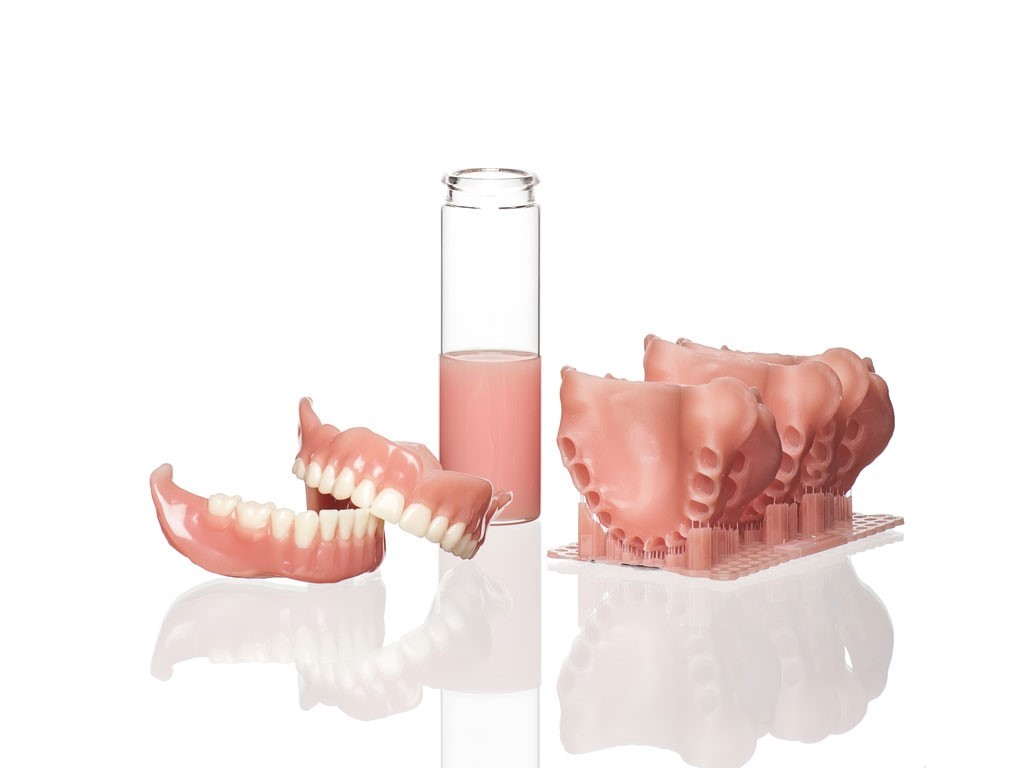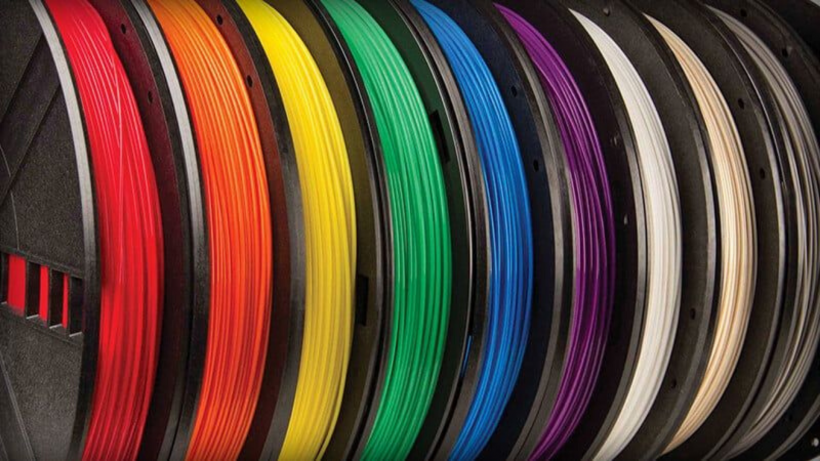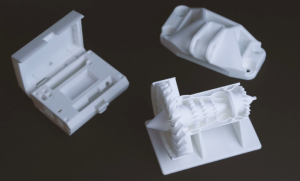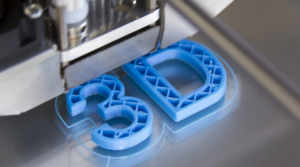Advancements in materials development and certification are ongoing within a still maturing 3D printing industry. For example, the Senvol Database lists as many as 2,245 different AM materials in 2020, compared to around 1,700 materials last year, which is roughly a 30 per cent increase.
To keep up with recent progress in the 3D printing materials market, today we’ll be exploring what’s new in 3D printing materials and what it means for the future of the industry.
3D printing materials for medical and dental applications
Within the medical industry, 3D printing is already used to create orthopaedic implants, surgical tools and dental devices. And today, the technology is actively supporting the battle against the COVID-19 pandemic, by producing test swabs, face shields and medical equipment parts.
The uptake of 3D printing for medical applications has accelerated material development for the sector.
One area seeing growth is high-performance polymers for 3D printing of implants. For example, the speciality chemicals company, Evonik, announced the launch of implant-grade PEEK filament last month.
The material is said to meet the requirements of ASTM F2026, which is the standard specification for PEEK polymers for surgical implant applications. According to Evonik, the new material is the first PEEK-based filament on the market that can be used in orthopaedics and maxillofacial surgery.
In a similar vein, Andaltec, a Spanish research centre, has unveiled that it will be developing a new set of active polymers for use in the 3D printing of medical devices.
The project, named PoliM3D, will see the characterisation of new antibacterial and analgesic filaments for FDM 3D printers. These new filaments will be used to produce customised implants, prostheses and surgical tools.
Furthermore, Polish 3D printing filament manufacturer, Spectrum Filaments, has launched a new filament intended for medical applications – ABS Medical.
The new filament is made from ABS Granulate, a material that meets the requirements of biological compliance of USP certificates in class VI or ISO 10993-1, according to Spectrum.
It is also approved for contact with food, according to EU standards No. 10/20111 and 21 CFR FDA. The material is targeting applications, including support structures for rehabilitation and light dentures.
Dental materials

There is a growing trend within the dental industry to 3D print dental models, and increasingly, end-use dentures and dental devices, like clear aligners and bridges.
These advancements are fuelled by the evolution of materials which are becoming increasingly certified for longer-term use in a human mouth.
For example, 3D Systems announced that its new biocompatible denture material, NextDent® Denture 3D+, has received 510(k) clearance from the U.S. Food and Drug Administration (FDA) at the end of 2019.
The NextDent Denture 3D+ material is suitable for 3D printing all types of removable denture bases, matching the mechanical properties of conventional denture base materials.
In a similar effort to qualify dental materials for 3D printing, AM company, Rapid Shape, has partnered with the dental manufacturer, VOCO. The latter has recently turned its focus to 3D printing materials, bringing to the market a portfolio of dental-grade materials in its V-Print family.
Furthermore, Swiss dental resin manufacturer, Saremco Dental AG, has recently released a new photopolymer resin. The new material is designed to 3D print permanent restorations, such as crowns, inlays, onlays and veneers.
The testing of the material revealed that the dental resin has comparable mechanical properties to the traditional ceramic crowns found in the dental industry today.
The wider adoption of 3D printing in the medical and dental field greatly depends on the pace of material innovation.
Only when medical professionals have access to biocompatible, durable and certified materials, will there be a way for them to enable more patients to benefit from personalised and better-performing medical and dental products.
3D printing materials for high-temperature applications

[Image credit: SABIC]
The use of 3D printing for applications exposed to elevated temperatures is creating the demand for heat resistant materials.
This leads to more material producers, as well as system manufacturers, developing and launching new materials to meet the demand.
One example of this is a collaboration between Roboze, an Italian manufacturer of extrusion 3D printers, and SABIC, a chemicals giant, on an amorphous thermoplastic polyimide filament, called EXTEM AMHH811F.
The new material boasts great resistance to high temperatures, thanks to a heat deflection capacity of up to 230°C. The material also has a 247°C glass transition, which the partners believe to be the highest of any 3D printable material. Additionally, it offers excellent flame- retardant properties, good chemical resistance and maintains its mechanical strength at high temperatures.
Similarly, Essentium has added high-temperature nylon to a portfolio of materials for its High Speed Extrusion (HSE) technology. Applications for the new material include machine components, jigs or fixtures for the aerospace, semiconductor and oil and gas industries, among others.
Developing aluminium alloys for metal AM
Aluminium will remain the fastest-growing metal group for AM throughout the next ten years, according to a recent report. One factor driving this growth is the global aluminium supply chain, increasingly recognising AM as a next-generation opportunity in aluminium manufacturing.
Therefore, it’s only natural to see accelerated material development of aluminium alloys for metal 3D printing.
One notable development involves the collaboration between Oerlikon, a materials expert, Linde, an industrial gases company, and the Technical University of Munich (TUM).
Supported by €1.7 million in funding, the team is committed to bringing a new high-strength aluminium alloy to the 3D printing market.
The development of aluminium alloys involves a lot of challenges, like the evaporation losses of alloying elements and the risk of microcracks due to a high-temperature environment.
The team is set to overcome these challenges to make the new alloys available to the aerospace and automotive industries, where strength and reduced weights are both crucial requirements.
Developing a crash-proof aluminium alloy for automotive 3D printing
In another example, engineering group, EDAG, has developed a new aluminium alloy, as a part of the ‘CustoMat_3D’ research project focused on adapting AM for automotive series production.
At present, aluminium alloys for AM don’t meet the requirements of the automotive industry, such as crash test performance. The newly developed material is designed to overcome these challenges by providing both higher strengths and higher elongations at the break.
The material was tested for several automotive applications, showing positive results. For example, it was possible to save weight in the dynamic heavy load-bearing wheel carrier and a complex component with high rigidity requirements from the wheel box area. Some of the savings were over 30 per cent of the expected potential.
Aluminium for Powder Bed Fusion and Direct Energy Deposition

A hear exchanger 3D printed using VELO3D’s new Aluminum F357 alloy [Image credit: VELO3D]
In addition to the examples above, there have also been launches of aluminium materials from system manufacturers. Last month, VELO3D, a manufacturer of metal Powder Bed Fusion (PBF) 3D printers, launched Aluminum F357 alloy, notable for its ability to be anodised.
Anodisation is the process of building up an oxide layer on the surface of a metal part to protect it from corrosion or provide a better surface for painting.
Aluminum F357 alloy is increasingly in demand particularly in the aerospace and automotive sectors.
While aluminium remains most widely used in PBF, some companies are adapting the material for Direct Energy Deposition, a process that uses high-powered lasers to build structures, layer by layer, directly from powdered materials.
One example of this is DED specialist, Optomec, which has launched aluminium alloys for its LENS technology. According to the company, its aluminium alloys provide an excellent surface finish, high deposition rates and a density of around 99.9 per cent.
Continued efforts to certify 3D printing materials
Materials certification is as crucial to advancing 3D printing as materials development. It helps to prove the consistency of AM parts, paving the way for production applications.
There are ongoing efforts to certify materials for 3D printing. A recent one comes from safety science certification company, UL, which has published a research study about the effects of 3D printing on safety-critical polymer performance properties.
The findings have enabled the standards group to develop a framework for evaluating and qualifying polymers for 3D printing, and specifically, flame-retardant ABS and PEI filaments.
According to UL, ‘the results of the research provide the preliminary knowledge necessary to develop guidelines for certifying polymer materials intended for 3D printing and guidance for drafting requirements’.
Material characterisation
Consistency is crucial for additive manufacturing. And it begins with control and characterisation of the feedstock material.
In manufacturing, the quality of the raw material will dictate the quality of the final product. But what is a high-quality AM material, and how would one go about evaluating this quality? For example, with powdered material, the quality is the product of dozens of variables, including the particle size, morphology, thermal properties, moisture absorption, and more.
With so many factors impacting the material quality, material characterisation – a process of probing and measuring material properties to understand material performance – becomes critical.
That’s why it’s exciting to see companies entering the field of material characterisation for AM.
At the beginning of the year, global material and product certification leader, Element, announced a launch of a dedicated characterisation facility for AM powders.
The new testing equipment will allow for chemical composition analysis, powder sieve analysis, particle size distribution, flow rate and other tests – all to ensure the powder is authentic, pure, uniform and ready for processing.



